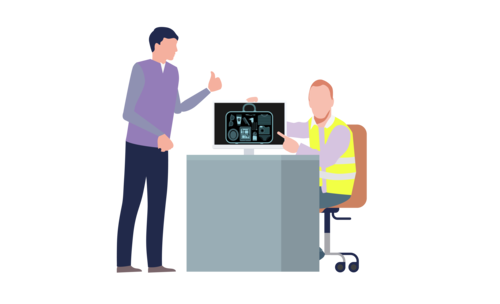Transitioning towards CT screening
An operator training- and monitoring perspective
Introduction
Explosive Detection Systems for Cabin Baggage (EDS CB) are becoming the new standard in screening cabin baggage at commercial airports across the world. Enhanced equipment enables automated screening of cabin baggage on explosives and is being implemented in various standards. For most of the bigger airports the transition towards EDS CB implicates the implementation of Computed Tomography (CT) x-ray equipment, therewith enabling the operational concept where liquids and electronics can remain inside the luggage during the security check. Replacing common x-ray equipment – mostly single and dual view systems – with CT equipment has various potential benefits.
Gunther van Adrichem (Managing Director, Point FWD) sees this transition as “the long awaited solution to make a step change in security checkpoints worldwide, providing for a better screening experience for both passenger and security operator.” He adds: “and this is just a beginning, introduction of these new technologies will allow for even bigger leaps in future detection and operational insights through available data.”
Better inspection capabilities
Eliminating the need to take out liquids and electronics can mean less trays used per passenger, increased security throughputs, a more positive passenger experience and eventually a more cost-efficient security operation. One of the enablers for these benefits is the capability of 3D imaging. 3D image analysis can be used particularly to better analyse the more complex images, for example those with electronics inside of baggage. A 2D image provides difficulties for visual analysis since laptops could be blocking the sight on other items, with the consequence to manually inspect a bag which in most cases means additional screening of belongings.
The overall experience operators have regarding 3D image analysis seems positive; operators experience increased visual analysis capabilities thanks to additional manipulation and analysis functionalities. This results in less manual searches, which eventually tend to become more targeted of aim. The introduction of 3D imaging however implicates a different way of screening as compared to 2D images. It provides for novel features – such as rotation and separation – operators have not worked with before, which take time and training to be successfully adopted into their standard image analysis capability.
To achieve CT implementation success it is crucial to have a quick and consistent operator adaption to new 3D screening capabilities. After all, the best equipment is of limited value if the people who operate it are not trained appropriately.
The human factor to CT systems
With this article we focus on the human aspect of CT implementation. Taking the security operator as the centre of attention; to our opinion the enabler for the quickest and most constructive way to success. We invite you to get more insight on how to manage the modern human-machine interaction whereas we focus on training, coaching on the job and continuous monitoring.
We seek to answer the ‘why’ question to 3D image analysis challenges, providing for solid grounds when approaching your implementation project in a broader sense. Security checkpoint stakeholders should perceive this integrated solution approach as keeping a marriage happy. This will only work if there is collaboration, communication and understanding
Read all three parts of this paper
The content of this paper is built around three main pillars deep diving into the operator training perspective when transitioning towards CT.
Part 1: Training approach and organization
Part 2: Training content and components
Part 3: Coaching and progression monitoring
At first, the organization around training programs is looked at, setting the context and requirements for a CT training program. Then, focus is on the content of training and the actual transition of moving from 2D to 3D image analysis. At last, a perspective on the continuous monitoring and enhancement of operator performance is discussed.
Download your copy
Make sure to get your copy of the three separate parts by hitting the buttons below. Have nice read and pleas contact the team for more info on our approach.



